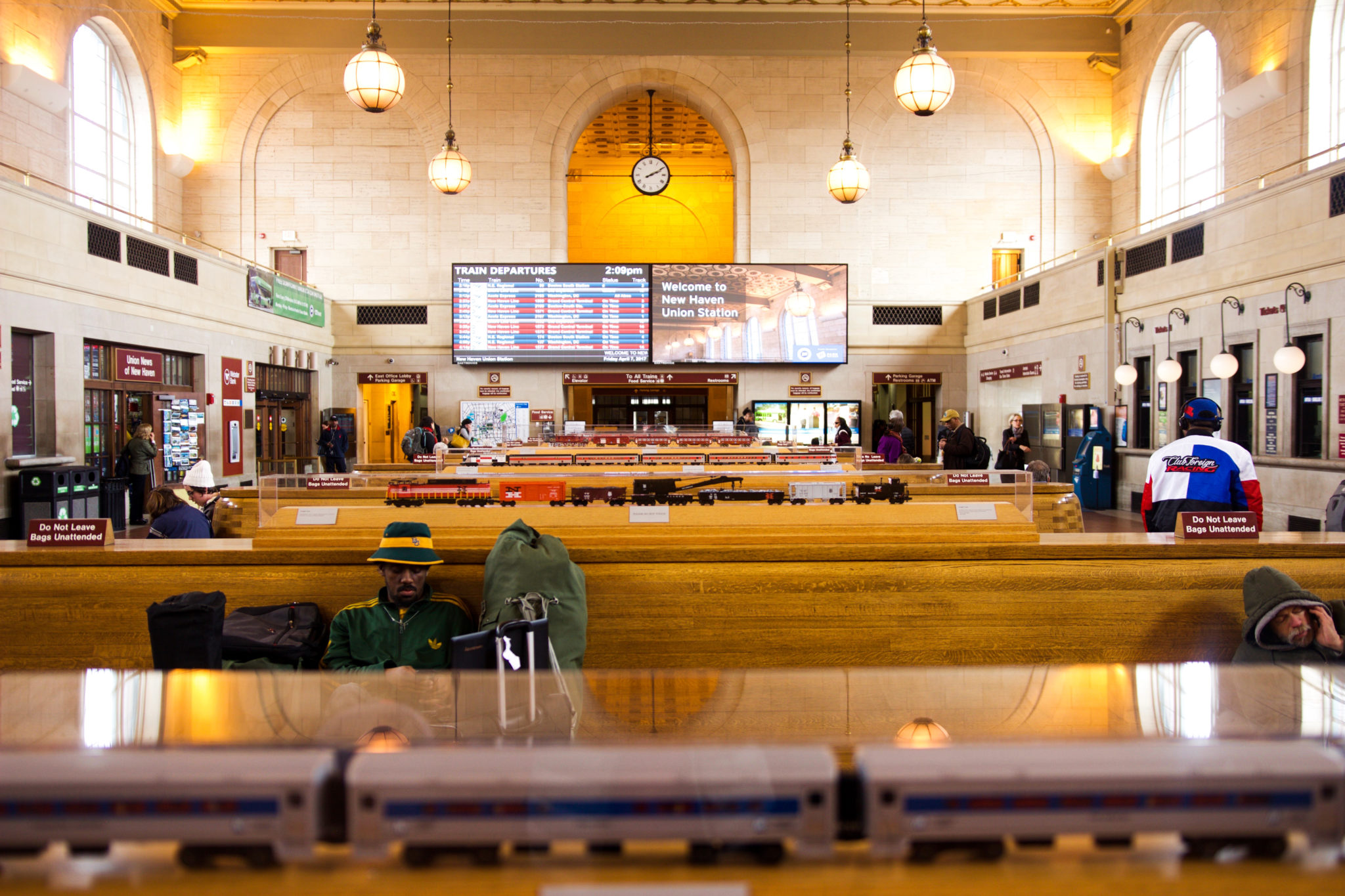
Vivek Suri
Although New Haven and New York City are located only about 80 miles apart, the journey between the two cities can take hours, often due to delayed trains and congested highways.
As part of an effort to revitalize Connecticut’s crumbling infrastructure, newly elected Gov. Ned Lamont SOM ’80 announced plans to renovate Metro-North’s New Haven Line running to New York. At an event at the Bridgeport Transportation Center earlier this month, Lamont called on the state to invest in new technologies to improve speeds and safety along the railroad line.
“The New Haven Line is a gem of a resource that hundreds of thousands of Connecticut residents depend on for their livelihoods, and for the sake of our economy we cannot let it fall into a state of disrepair,” Lamont said at the event.
Since 2016, the line has seen around 40.5 million passenger trips a year — making it the busiest commuter rail line in the country. The state has invested hundreds of millions of dollars in the line over the past decade, including around $128 million to replace the overhead power lines. In addition to updating amenities at stations like Darien, Stamford and Noroton Heights, the state has purchased 400 of a new type of railway car to replace the previous 40-year-old cars.
Connecticut’s business leaders have thrown their support behind the proposal.
“The lack of investment in Connecticut’s infrastructure over the past several decades affects residents from every corner of the state,” said David Lehman, the commissioner-designate of the Connecticut Department of Economic and Community Development, in a statement March 6. “These investments are crucial if Connecticut is going to be able to compete with other states for both businesses and residents.”
In recent years, train service from the Elm City to the Big Apple has gotten slower — rather than faster — in light of safety restrictions that set speed limits on outdated cars.
Unfortunately, the New Haven Line is not the only aspect of the state’s transportation system that has been rendered obsolete.
The Gold Star Memorial Bridge, which connects I-95 across the Thames River between Groton and New London, carries 106,000 vehicles per day. The bridge is now 76 years old and has been rated “structurally deficient” and in “poor condition” by transportation nonprofit TRIP. Lamont’s administration estimates that an update will cost around $300 million.
Lamont has called for a 40 percent decrease in bond authorizations, which borrow money on behalf of the state to invest in programs like new schools. His proposed budget, which was published last month, exempts the Special Transportation Fund — which allocates funding to state-sanctioned transportation routes — from the cuts.
Still, the Special Transportation Fund has revenue issues and might exhaust its resources in years to come, according to Sacred Heart political science professor Gary Rose.
Mayor Toni Harp supports the renewal of the New Haven Line. The improvement has the potential to enhance economic opportunities in the New Haven area and relieve highway congestion, according to mayoral spokesman Laurence Grotheer.
Grotheer added that Harp hopes that the state will allow the expansion of Tweed-New Haven Regional Airport. The Connecticut General Assembly is currently considering a statute that would remove the current limit on the length of the airport’s runway — a move that Lamont has endorsed. Currently, Tweed offers just six flights daily to Philadelphia.
Yale officials have also supported the airport’s expansion, citing its importance to New Haven’s economy.
“The city is poised for growth, with excellent colleges, a millennial-friendly downtown, and thriving startups in biotech and digital tech,” Rich Jacob, Yale’s associate vice president for federal and state relations, said in a newsletter to the Yale community this week. “New Haven checks every box but one: transportation.”
According to Jacob, John F. Kennedy International Airport and LaGuardia International Airport capture 63 percent of Tweed’s potential passengers.
According to Lamont, Connecticut residents spend 81,845 hours stuck in traffic each year.
Nathalie Bussemaker | nathalie.bussemaker@yale.edu







